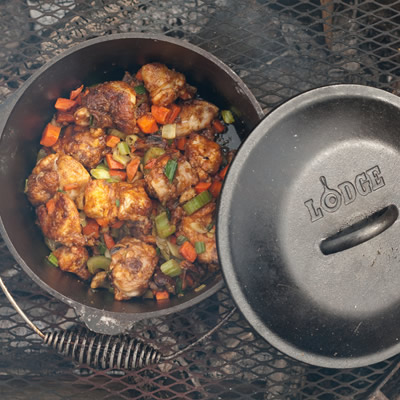Fire-Roasted Vegetables—The Power of Man’s Red Flower
Roasting vegetables on an open fire—what used to be a necessity is now a luxury

“Grandma, Grandpa is putting all those (perfectly good) vegetables in the fire!” said my granddaughter, eyebrows raised, arms akimbo.
“Why are you doing that?” she said, looking like I was going to get in serious trouble.
I am reminded of The Jungle Book’s King Louie:
Now don’t try to kid me, mancub
I made a deal with you,
What I desire it is man’s red fire
To make my dream come true!
Now give me the secret, mancub
Come on, clue me what to do
Give me the power of man’s red flower
So I can be like you!
Why AM I doing this, roasting vegetables on live fire?
It is, truthfully, a fair question. The answer used to be “because we have to,” but now is “because we can.” What used to be necessity is now luxury, something special. She is not looking at me, not directly, but watches my gloved hands use long tongs to set vegetables on the fire—football-sized butternut squash, parsnip, yam, purple sweet potatoes, beets and Spanish onions as big as softballs—nestled one by one in crimson coals.
Here are the directions to roast vegetables directly on coals.

Equipment and tools
- A wood or charcoal fire that has burned down to six inches or more of coals (15 centimetres)
- Long stainless-steel barbecue tongs
- Fireproof gloves
- Paring knife
- Serving spoon (for scooping out the cooked vegetables)
Ingredients
-
A selection of tubers, roots and squash. I used yams, purple sweet potatoes, butternut squash, beets, Spanish onions and parsnip.
Method
1. Cut enough wood to fill a firepit. Most of the logs should be cut to forearm size so they burn quickly to coals.
2. Wash the vegetables, scrubbing their skins with a vegetable brush.
3. Poke holes in the squash skin, potatoes and yams. (I ignored this advice once as a teenager just to see what would happen. My mother made me clean the oven by hand, even though self-cleaning was printed below the word Kenmore on the face of the stove. I have poked my vegetables without fail ever since.)
4. Once the wood is burned to an even bed of red coals, add vegetables using tongs and fireproof gloves.
5. Turn the vegetables over every five minutes to char on all sides.
6. Test the vegetables for doneness by removing them from the fire with tongs and gently inserting the tip of a paring knife. When the knife slides in without much resistance, the vegetables are done.
7. The smaller purple sweet potatoes took 20 minutes; everything else took 30 minutes.
8. Remove the vegetables to a fire-proof container. (I used an aluminum foil baking pan)
9. Cut each vegetable in half lengthwise and serve by scooping out the cooked (uncharred) part with a spoon or trim the char from the vegetables with a paring knife.
Granted, roasting vegetables on live coals takes a certain fearlessness. But man’s red flower is a defining attribute we take for granted. Like so many distant early lessons, our polished urban lifestyle and sanitary environment removes us from our historical context. We sometimes forget there was a time that we did all our cooking on the fire.









